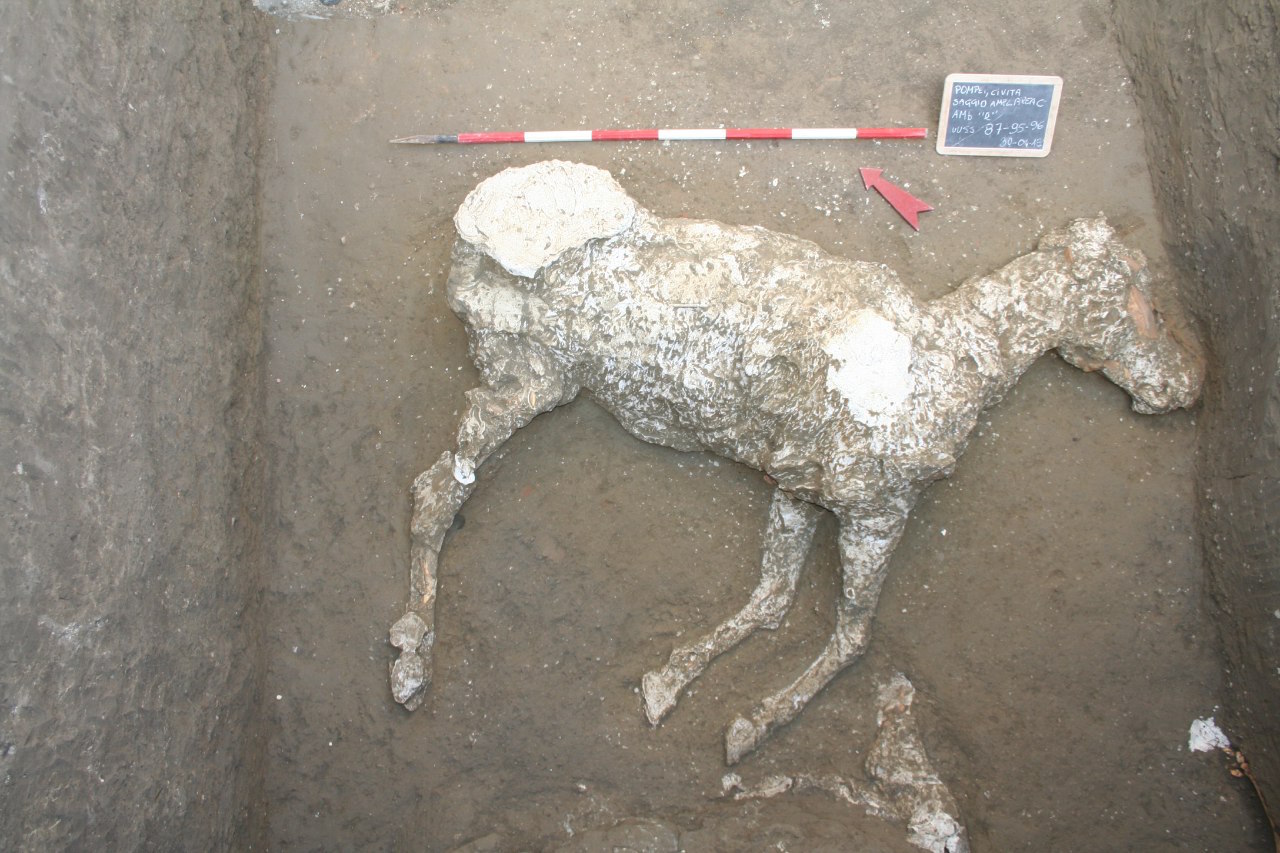Ancient Horse and Stable Found Under Pompeii Ash

The horse likely swiveled its ears when it heard the deafening roar from Mount Vesuvius in A.D. 79. That was one of the last things the animal ever did: After that, it died, buried in the massive amounts of ash that killed about 30,000 people and destroyed Pompeii.
Now, archaeologists have found the remains of that horse and the stable where it perished, just outside of Pompeii's city walls. Amazingly, the ash-covered cavity carved out by the horse's body was so well-preserved that researchers were able to inject liquid plaster into it.
In other words, the plaster reinflated the "animal," or at least its shape, making it look like the statue of a horse that is eternally resting on its left side against the ground. [Pompeii Photos: Archaeologists Find Skeletal Remains of Victims of Vesuvius Eruption]
Previous excavations have unearthed the remains of donkeys and mules at Pompeii, but this is the first complete outline of an ancient horse discovered in the ancient city, the archaeologists said.
Several clues suggested that a horse's body had carved out the cavity, including an imprint of the animal's ear on the ground. Moreover, the animal's proportions indicated that it is a horse (Equus caballus) rather than a mule (the offspring of a male donkey and a female horse) or a hinny (the offspring of a female donkey and a male horse), according to archaeologists with Parco Archeologico di Pompei, which excavated the site at Civita Giuliana.
Compared with many horses today, the Pompeii animal was small, standing 4.9 feet (1.5 meters) tall at its shoulder blades. But this height was remarkable for horses during the Roman period and suggests that people were selectively breeding horses in the Pompeii region, the archaeologists said.
The excavation team also injected liquid plaster into other structures in the stable, which allowed the researchers to identify a trough. In addition, they found an iron harness with small bronze studs by the horse's skull, suggesting that people were interacting with the horse. The animal probably was of great value to them given that they had a metal harness for it, the archaeologists said.
Get the world’s most fascinating discoveries delivered straight to your inbox.
It's likely that this horse was part of a noble breed of horses that took part in circus games and races during the time of the Roman Empire, the archaeologists said.
Other excavations at Civita Giuliana have revealed ancient jugs, tools and kitchen utensils, the archaeologists said.
Original article on Live Science.

Laura is the managing editor at Live Science. She also runs the archaeology section and the Life's Little Mysteries series. Her work has appeared in The New York Times, Scholastic, Popular Science and Spectrum, a site on autism research. She has won multiple awards from the Society of Professional Journalists and the Washington Newspaper Publishers Association for her reporting at a weekly newspaper near Seattle. Laura holds a bachelor's degree in English literature and psychology from Washington University in St. Louis and a master's degree in science writing from NYU.




